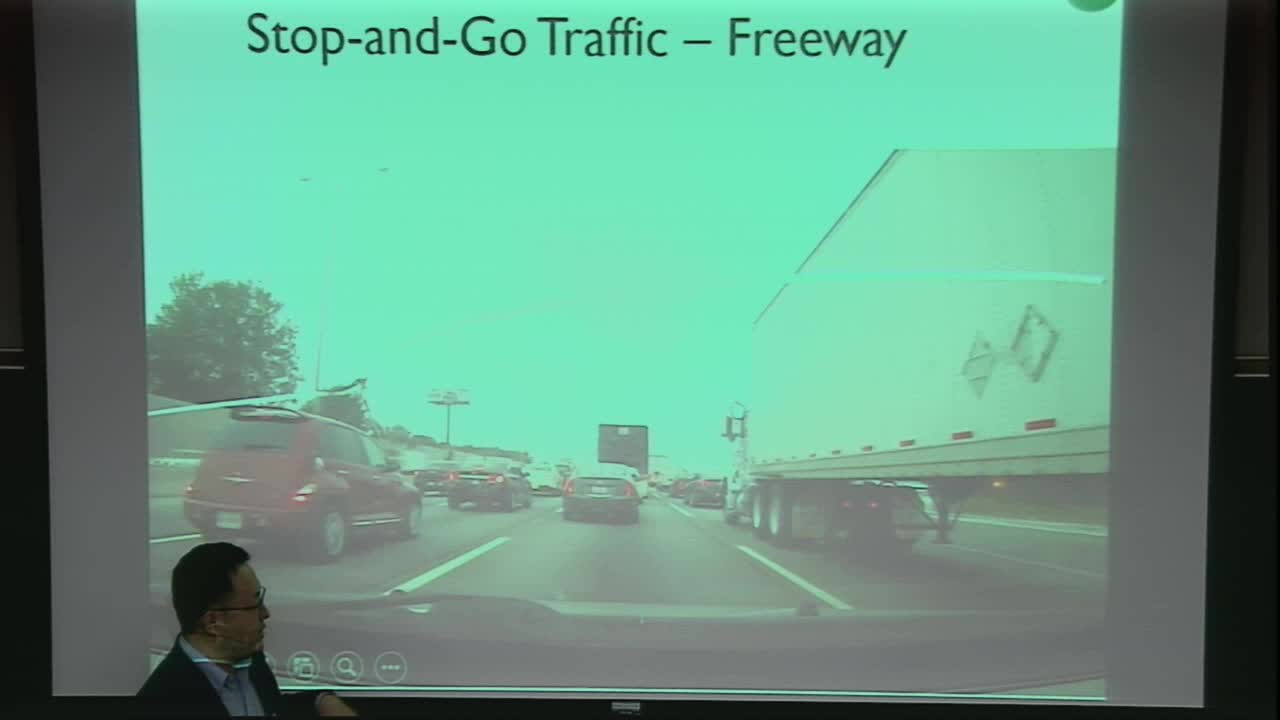Highway Traffic Smoothing Via Trajectory Control of Connected and Automated Vehicles
Presenter
May 15, 2017
Abstract
Increasing congestion, excessive fuel consumption and emissions, and unacceptable safety risks remain the major challenges to next-generation highway systems that are meant to be smart and sustainable. All these challenges are linked to frequent stop-and-go traffic that seems inevitable in existing highway traffic systems due to natural limitations of human drivers (e.g., uncooperative, error-prone, and slowly-reacting driving behaviors). It is very challenging or expensive to find effective solutions to smoothing highway traffic and improving its overall performance with traditional approaches. Advanced connected and automated vehicle (CAV) technologies offer unprecedented opportunities to smooth highway traffic. These technologies render the high possibility of precise control of intelligent vehicle trajectories in addition to passive accommodation of defective human drivers. Despite intensive studies on controlling isolated trajectories in other fields, optimizing multiple trajectories of a stream of highway vehicles that constantly interact with each other is a new research problem. As a pioneering attempt, this study proposes a shooting heuristic (SH) approach that constructs smooth trajectories for a large number of interactive vehicles under realistic constraints (e.g., vehicle kinematic limits, traffic arrival conditions, car-following safety, and signal timing). SH has a very parsimonious structure (e.g., only four acceleration variables) and a very small computational complexity. By generalizing the time geography theory to incorporate acceleration limits, we found that SH has a number of elegant properties on feasibility and optimality, and we showed that SH is essentially a generalization of the classic traffic flow models (e.g., the kinematic wave model). A customized optimization framework is proposed to simultaneously optimize all performance measures. Further, an exact optimization method is proposed for a simplified SH problem. Numerical examples are conducted to illustrate these computational and theoretical findings and to draw managerial insights. They showed that vehicle trajectories produced from SH significantly outperforms the benchmark case with all human drivers at all measures. This study reveals a great potential of trajectory optimization approaches in transforming the current transportation systems to the next generation. It lays a solid methodological and theoretical foundation for solving a number of related traffic operations problems with advanced technologies at various space and time scales.
